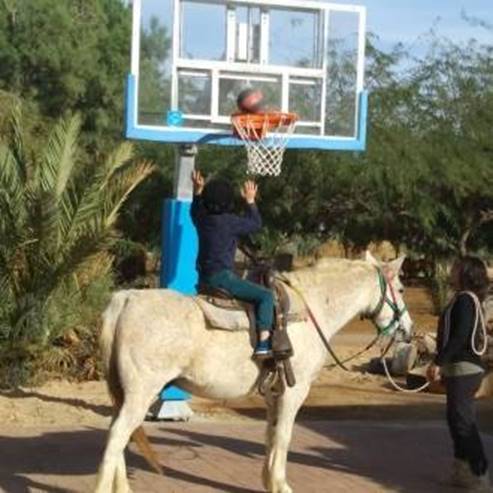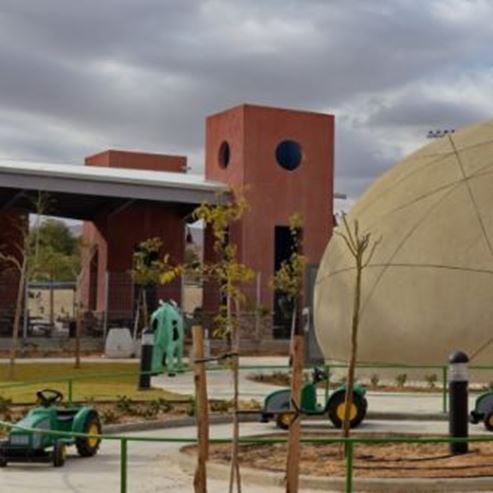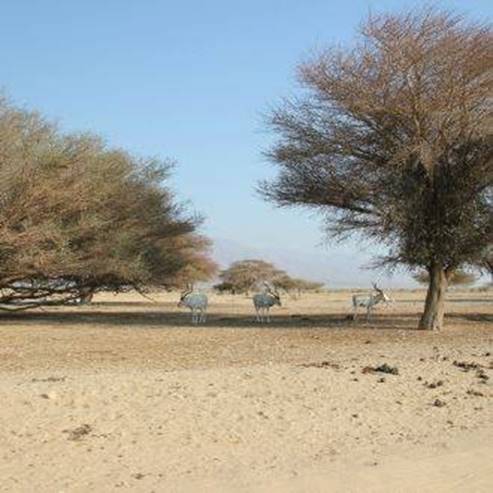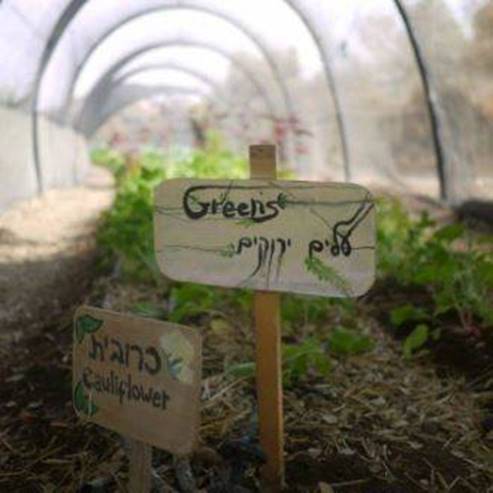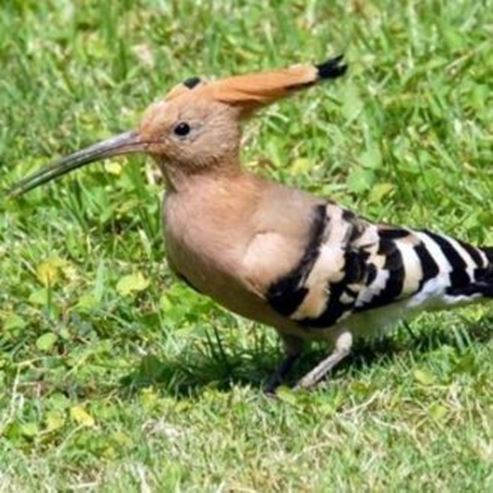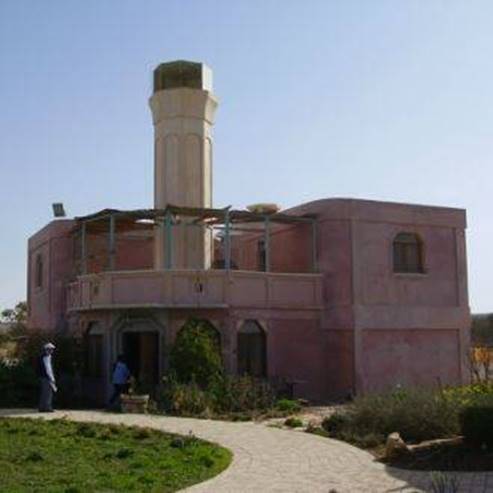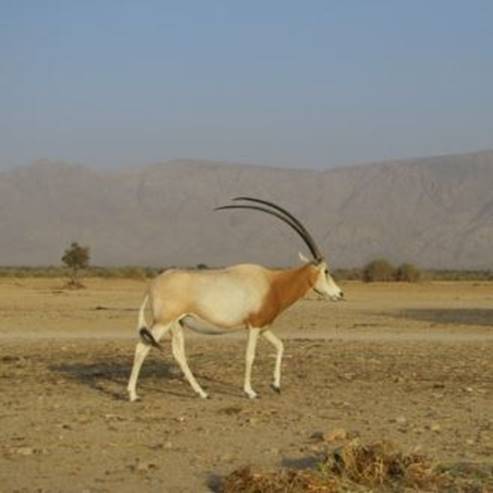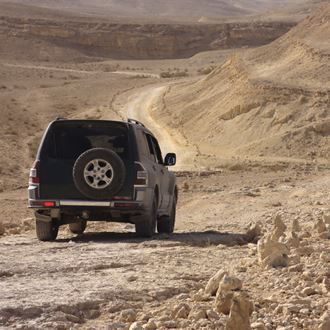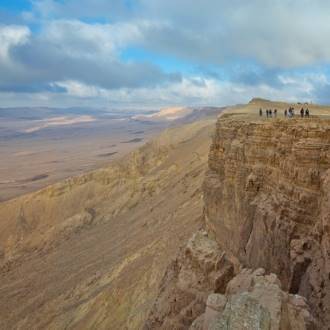Tigers Temple and Gev Ashron Ovda
Prehistoric site
The Tigers Temple in the Ovda Valley is a fascinating relic of the prehistoric cultures of the Negev. As the road continues to the south, the Israel Nature and Parks Authority has laid out a new trail for off-road vehicles, which leads to a large water cistern at Nahal Isaron. One large flood is enough to fill the cistern, and the water will remain inside until at least the beginning of summer.
Main points of interest:
The Tigers Temple
A large water cistern in the heart of the desert
Desert plantlife
Viewpoint
From the top of the hill of the Kasui sand dunes, around 3 km north of the Tigers Temple
Israel Nature and Parks Authority activities to improve visitor services and preserve the site
The Authority maintains the Tigers Temple and has set up the site for visitors. The Authority has marked
the trail to the Isaron cistern.
How to get here:
From the Shizafon junction travel south for 5 km on Route 12, turn left towards Shaharut and go over
the beautiful hill of the Kasui sand dunes. Around 400 m before the Ovda base gate are the remains of
the Tigers Temple, around 50 m east of the road. The remains are surrounded by a metal fence and
there is an explanatory sign next to them.
Background
The Ovda Valley is a sandy valley which spreads across 60 km 2. It was named after Operation Ovda -
the military operation in which the valley and Eilat were occupied at the end of the War of
Independence. Human remains from prehistoric times have been found in the valley, and substantial
parts of it were altered leading up to the War of Independence. Today the Ovda airport and military base
are situated at the heart of the valley.
Trip route
1. The Tigers Temple
NB: The Tigers Temple can be visited in a private vehicle.
The Tigers Temple is a prehistoric, open-air ritual site. The site was in use from the mid-6 th millennium
BC (Neolithic period) until the 2 nd millennium BC (Middle Bronze Age). The site was discovered by
accident by a tank, and researched by Uzi Avner and Ora Yogev of the Israel Antiquities Authority. The
Israel Nature and Parks Authority installed a low fence around the complex in order to protect the
sensitive site from being crushed by vehicles, and put up an explanatory sign next to the temple.
The temple was built around a square courtyard surrounded by a double ‘wall’ made out of one layer of
small stones. The length of each side of the courtyard is around 12 m. Four pits were dug in the
courtyard, and according to the opinion of the researchers, these were ancient altars from different time
periods. Carbon-14 dating puts the age of the oldest soot found at the altar at about 7,500 years. At the
west of the courtyard there is another complex, perhaps the sanctuary of the temple. This is an
elongated cabin with 16 small stone monuments which probably represented their gods or ancestors.
Small stone panels were discovered to the east of the courtyard, which are around one metre in length
and display the shapes of 16 animals. One figure shows an oryx, and most of the other shapes have
been identified as tigers, based on their raised tails. The tigres face east towards the rising sun, which
might represent fertile life, while the oryx is displayed without a head, and is the only animal who faces
west. It would appear that he represents death. The small stones which are attached to the panels are
reconstructions of these shapes
The Israel Nature and Parks Authority opened the site to visitors in 2011.
2. The Isaron cistern
From the Tigers Temple, continue along the road to Shaharut. Continue for around a kilometre after the
gate of the Ovda base, and at the bend in the road continue straight on the dirt track marked in black,
leading to Nahal Zugan. The road runs parallel to the fence of the Ovda base. Continue for 1.9 km and
turn left onto the dirt track marked in blue.
Along the way there are several beautiful Negev acacia trees. Some of these are fruit-bearing. The
Negev acacia bean pods have a crescent shape and are not curled like those of the twisted acacia. The
Negev acacia grows in high regions in the Eilat Mountains and the Nahal Hayon Paran basin, while the
twisted acacia grows in lower and hotter regions.
After around 1.4 km on the blue road, it is worthwhile looking around the area to see the Ancestral Trail
(Naqab) which goes down from the hill to the right. Desert residents knew about the large cistern and
probably made their way there on this path.
After another 700 m you will reach the Isaron cistern parking area. From here, walk between the acacia
trees for about 200 m to get to the cistern.
The Isaron cistern is a wonderful place to spend a pleasant hour on a sunny winter’s day, but swimming
in it is forbidden (the water is needed by the wildlife).
The cistern gathers water at the foot of a 10 m high rock waterfall, and when it it is full, a pool of around
15 m in diameter and 2 m deep forms. The depth of the cistern can change from year to year,
depending on the sediment brought in by Nahal Isaron. Nahal Isaron is a short stream. It starts out a
little way south of Shaharut and goes down to the Ovda Valley. There it joins Nahal Bikatayim and the
many channels which make up Nahal Hayon, one of the biggest streams in the Negev, which flows into
Nahal HaArava. The many streams which bring water to the Ovda Valley enabled human settlement of
the place from prehistoric times up until to the mid-20 th century.
- Type
- 4x4
- Region
- South
- Near to
- Eilat
- Length
- About 4 Km
- Duration
- about 1 Hour
- Recommended season
- Spring, Autumn, Winter
- Starting point
- Tigers Temple and Gev Ashron Ovda (map)
- Ending point
- Tigers Temple and Gev Ashron Ovda (map)
- Special equipment
- Hat, Shoes, Water
- Precautions
- Do not stay in the area at night
- Parking
- Parking
- Circular
- Circular
- Suitable for children
- Suitable for children
Similar trails
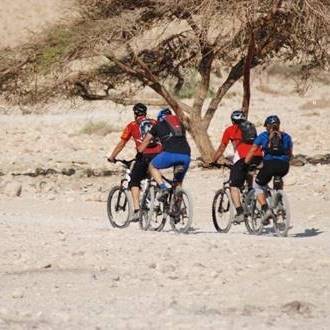
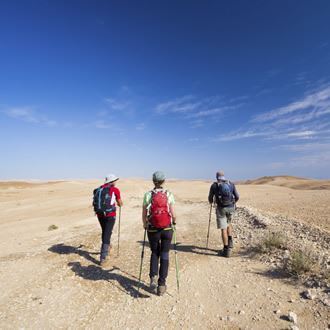
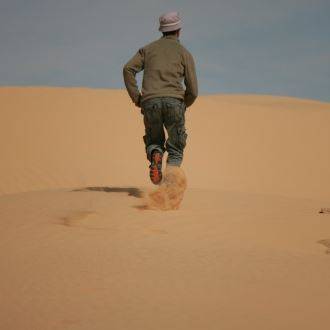
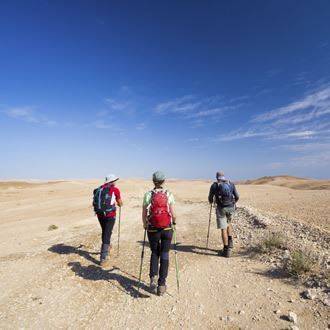
From Ayit Mountain To Kasuy Vally
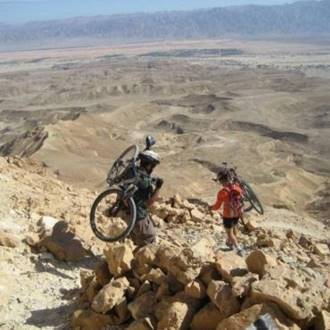
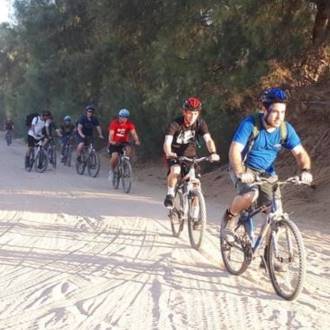
Nearby attractions
